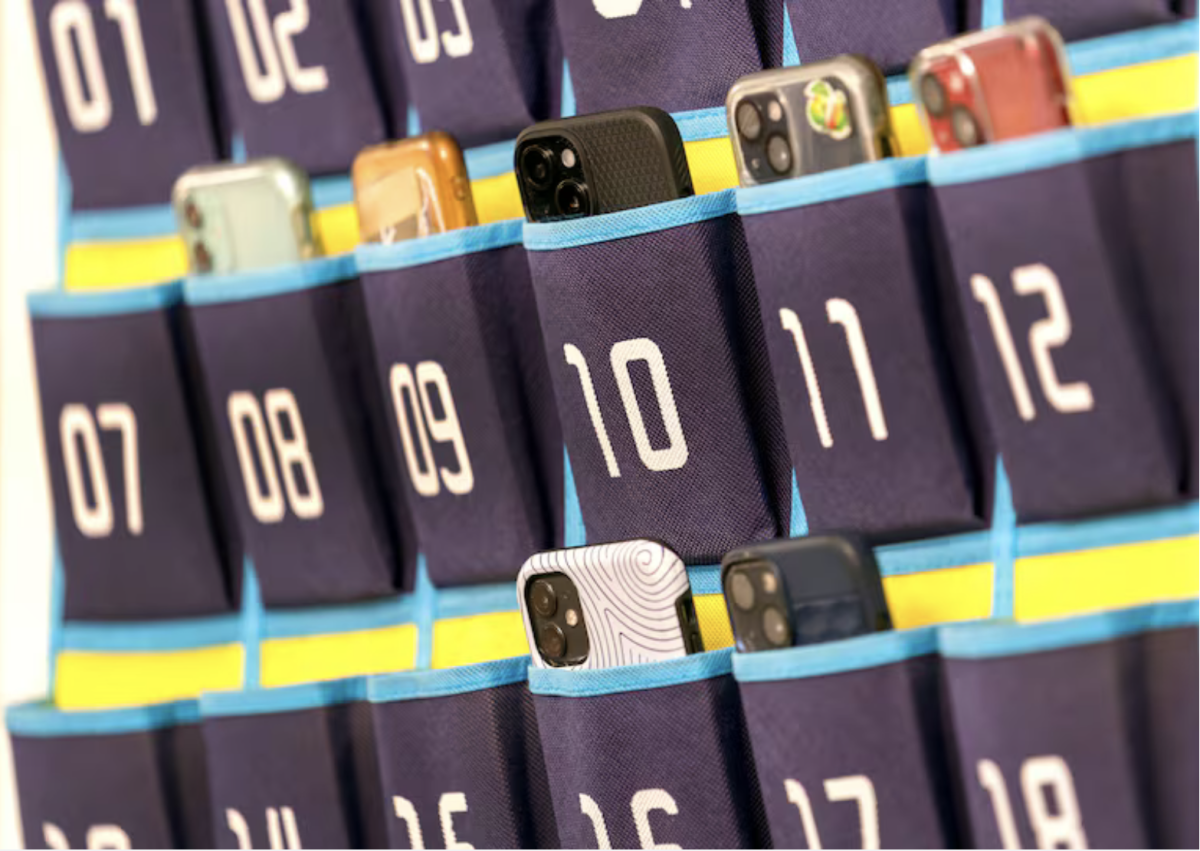In this day and age, there aren’t many students around the world who don’t carry a phone with them 24/7. Soon, students might not be able to have all of these privileges. The days of phone-free schools have returned as phone bans on campus make their way through the country.
In August of 2024, school districts all around California announced new phone restrictions. After Governor Gavin Newsom urged schools to take action and restrict phone use in class, schools throughout California are ready to ban phones at school. Ygnacio and Mt. Diablo high school students in Concord have already started the school year without their phones. The second largest district in the nation, LAUSD, has announced plans to ban social media and cell phones from school, effective in January 2025.
According to Assistant Principal Angie Corritone, Monte Vista has no plans to change phone rules. Typically, each classroom and teacher sets their own policies. The use of phone caddies or jails is common around the campus. Each teacher has their own tactic to get students to put their phones away, whether by using the number of phones to take attendance or threatening to take them away for the rest of the day.
“I would feel restricted[without my phone],” said sophomore Caitlyn Delvecchio “I wouldn’t be able to talk to people outside of school, like my parents. Also, I like to have the option of having my phone in classes that allow it.”
Teachers around campus are divided on their opinions on phone policies. No matter the rules, students can always find a loophole. While some teachers restrict phone usage for the entire period every day, some only restrict them on test days, and some never at all. Many teachers see different effects of phones in their classrooms.
“The impact [of phones] that I see is usually distraction,” said Richard Henriquez, a Spanish teacher at MV. “No [I don’t see banning phones being beneficial] because one of the biggest issues I’ve seen with teachers that do use phone caddies on a regular basis is the use of burner phones.”
Students have already found ways to resist the current phone restrictions. Students have begun to bring fake or old phones into school, replacing their real devices in the caddies. That way, they’re free to be on their phones in class without the stress of their teacher noticing the empty space in one of the caddy’s pockets.
One way schools are stopping the use of phones on campus is through the use of Yondr pouches. Yondr pouches are pockets for your phone and earbuds that lock magnetically. These pouches are locked by teachers at the beginning of the day, prohibiting students from being on their phones for the rest of school. The pouches are unlocked by teachers or by a device near the exit of the school at the end of the day. Students are only allowed to take their phones out in case of emergencies. Yondr charges about $25-$30 per pouch. With thousands of students, schools will have to make the decision to take the big jump in purchasing these pricey pouches.
“The more we put restrictions on things,” Corritone said. “The more motivated people in the world are to find ways around it.”









